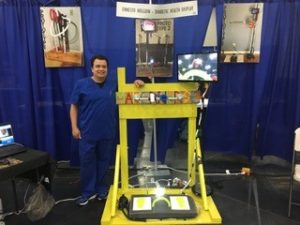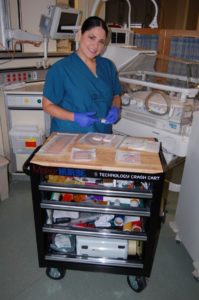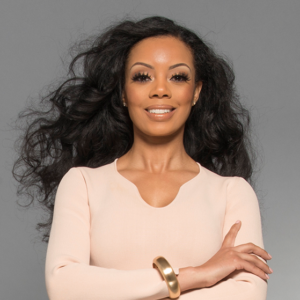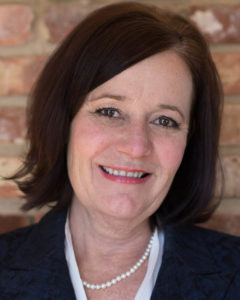Ernesto Holguin, RN, BSN, CNN, dialysis clinical coordinator at Las Palmas Medical Center in El Paso, Texas, was saddened to see his elderly patient arrive for her dialysis appointment in 2003 with a foot infection caused by a diabetic ulcer.
“Diabetes had affected her eyesight and caused her to lose feeling in her feet,” says Holguin. “It was only when she smelled a foul odor emanating from her foot that she realized something was wrong.”
Wishing there was a tool that could assist diabetic patients in preventing foot ulcers from developing, Holguin decided to invent a device.
Holguin is one of many nurses across the country who have envisioned inventions they believe will help improve patient care. One of the earliest nurse inventors, Bessie Blount Griffin, an African American nurse, invented a feeding tube during World War II to help feed paralyzed veterans. Since then, many more nurses have tapped into their natural problem-solving skills to invent devices to improve the patient experience.
For Holguin, that meant finding a way for patients to avoid diabetic foot ulcers or in the event they did develop a foot ulcer, to prevent it from becoming infected. The American Podiatric Medical Association (APMA) says that foot ulcers are one of the most common complications in patients with diabetes and if not treated properly, can lead to infections and in some cases, diabetes-related amputation. According to the APMA, foot ulcers occur in approximately 15% of diabetic patients and are commonly located on the bottom of the foot. Among patients who develop a foot ulcer, 6% will be hospitalized due to infection or ulcer-related complications, and 14–24% of patients with diabetes who develop a foot ulcer will require an amputation.
“The current protocol for prevention of diabetic foot ulcers involves patients checking their feet on a daily basis for cuts, cracks, blisters, and signs of an open wound,” Holguin says. “Patients who have trouble viewing the bottom of their feet are often told to stand over a mirror at home, but this can be difficult for patients who are overweight, arthritic, or elderly and don’t have good balance.”
Holguin envisioned a device that patients would use at home to prevent and effectively monitor their diabetic foot ulcers. The apparatus would inspect, dry, and take pictures of a patient’s feet and then send that information to their clinician.
His idea began to gain traction in 2007 when the first iPhone was released, and the idea of doing remote patient consults became a distinct possibility. In 2015, Holguin was invited to a workshop that the MakerNurse program was holding in Texas. Founded in 2013, MakerNurse works with nurses to bring their ideas for inventions to fruition, believing the best ideas for patient care are often developed by those on the front lines who work directly with patients.
“I told Anna Young and Jose Gomez-Marquez, the cofounders of MakerNurse, about my invention and they were very enthusiastic and encouraged me to build a prototype,” Holguin recalls. “Even though I’ve always liked to tinker, I never imagined I would one day design and build a device that could help my patients.”
Gomez-Marquez says MakerNurse launched in 2013 with support from the Robert Wood Johnson Foundation. MakerNurse provides the tools, platform, and training to help nurses like Holguin make the next generation of health technology. Two years ago, MakerNurse partnered with the University of Texas Medical Branch at Galveston to open their first MakerHealth Space in John Healy Hospital.
“Too often nurses have a great idea on how to but aren’t sure how to make it a reality,” says Gomez-Marquez. “We encourage nurses who have an idea for an invention to build a prototype and run with their idea.”
Working out of his garage in El Paso, Holguin recently finished the fourth prototype for his device. The first three he says were too large and cumbersome for patients to use. The U.S. Patent and Trademark Office recently certified Holguin’s patent, and is now working with a local medical incubator to turn his idea into a medical grade device.
“The next step is to have the device tested in clinical trials, and if successful, to submit it to the Food and Drug Administration (FDA) for approval,” Holguin explains. “I’ve talked with several doctors who believe my invention could be part of an important part of a diabetic patient’s treatment plan.”
In addition to making it easier for diabetic patients to monitor their feet for foot ulcers, Holguin believes his invention would reduce hospital readmissions. And more importantly, it could also help patients maintain a better quality of life.
“Some diabetics are only in their forties or fifties when an infected foot ulcer leads to amputation and disability,” says Holguin. “I’m confident this device can help diabetic patients to remain employed and live fulfilling lives.”
Making Your Idea Reality
Do you have an invention you think would improve patient care? Here are some tips on how to get started.
Conduct Due Diligence
It’s important to research whether there are any similar products in development, and also to decide whether you want to sell your idea to a company or to start your own business. Organizations such as the Small Business Administration can help you with these decisions.
Design a Prototype
Ideas are great, but you need to have something tangible to demonstrate how your invention works. MakerNurse can help nurses learn how to sketch and design a prototype and test out their ideas.
Seek out Support
MakerNurse has MakerHealth Spaces across the country that provides nurses with direct access to tools, materials, and expertise to build prototypes and test their ideas. Interested hospitals can host a MakerNurse workshop or invest in a MakerHealth program for their hospital. Visit MakerNurse.com to learn more.
Additionally, companies like Edison National Medical lend their expertise to help inventors to make their ideas a reality. The company says inventors will never pay more than $25 so it’s low-risk.
Consider a Patent
After you’ve developed a prototype for your idea, consider getting a patent to protect your invention. Visit the U.S. Patent and Trademark Office.
Nurses as Makers
Roxanna Reyna, BSN, RNC-NIC, WCC, a wound care coordinator at Driscoll Children’s Hospital in Corpus Christi, Texas, calls herself “MacGyver Nurse.” True to her moniker, she invented a unique skin and wound dressing for infants with abdominal wall defects.
Reyna’s workplace, Driscoll Children’s Hospital, was one of five “expedition sites” initially launched at hospitals in California, New York, and Texas, by MakerNurse.
Reyna got the idea to make a dressing for children born with omphalocele, a type of birth defect that leaves intestines protruding from the body and covered only by a thin layer of tissue. Surgery repairs the defect, but in the interim, the infant is at risk of infection.
“There weren’t any dressings or bandages made for kids that provided the same level of healing,” says Reyna. “So, I started experimenting with bandages, sponges, and tape.”
Reyna’s invention not only helped her colleague and young patients, but she was also invited to the White House in 2014 to meet President Obama and to take part in an event honoring “makers.”
Since Reyna’s product is tailored to a specific group of patients and there’s not enough demand for it to be manufactured on a large-scale basis, she did make directions on how to construct her dressing through MakerNurse.
A Path of Beauty
Monique Rodriguez was working as a labor and delivery nurse in Indiana when she decided to launch her own beauty company, Mielle Organics.
“While looking for natural solutions for my own hair challenges, I began creating products in my kitchen and blog about my hair journey on social media,” says Rodriguez. “I gained an audience and people began to
ask if they could purchase my concoctions. A light bulb went off and Mielle Organics was born.”
Rodriquez initially stayed in her nursing job to save money to fund the company.
“I strongly believe in speaking things into existence. I wrote my resignation letter in May and dated for November and was actually able to quit my job sooner,” she says.
Although she had little entrepreneurial experience when she started her company, Rodriguez did have drive and determination. In an effort to learn as much as she could, Rodriguez read books, listened to podcasts, and scoured the Internet to obtain as much information as possible.
“When I launched my business in 2014, natural hair products for black hair was an emerging market and I was attempting to stay on the cutting edge,” she says. “Today, the market is much more competitive, and although there’s room for all brands to succeed, we strive to be number one.”
Rodriguez, who worked as a nurse for nine years, says one of the biggest barriers she faced in launching her own business was not letting fear overcome her.
“It was very scary leaving my career as a RN, because of the fear of the unknown,” says Rodriguez. “I also wish that I had a business mentor or someone to talk with in the beginning.”
Rodriguez says her background in nursing also proved helpful in developing the Mielle Organics line.
“I understood the importance of using high quality ingredients that are effective for hair growth,” she says. “When we formulate our products, we don’t just focus on hair care, but also how healthy are the ingredients.”
Today, Rodriquez leads a corporate staff of 13 and her business is thriving. Mielle Organics are now sold at Sally Beauty, Target, and CVS locations.
An Invention Leads to a New Business
Lisa Vallino, RN, BSN, still remembers when she and her nurse colleagues would turn plastic cups into makeshift intravenous (IV) covers for their pediatric patients. Although it worked to prevent patients from accidentally dislodging their IVs, Vallino thought there had to be a better way.
“Nurses are inventors by nature,” says Vallino. “I looked at these IV cups we were using to keep our young patients from snagging and pulling out their IV tubing, and it occurred to me that someone should invent a pre-cut IV insertion site cover.”
Vallino mentioned the idea to her mother Betty Rozier, and the two worked to design their own version of an IV site protector. They started with a specimen cup and tweaked the dimensions into a prototype they called “IV House.”
“The first feedback we received from nurses was that the device was too big,” says Vallino. “We went back to the drawing board and made a smaller size, as well as providing ventilation so we weren’t providing a warm, dark, and moist environment under the IV House.”
She and her mom then worked with a plastics manufacturer to produce the product in bulk.
“The first attempt was a disaster,” explains Vallino. “The manufacturer delivered the IV House shipment to the hospital without labels and we also discovered the finished product was full of flaws.”
The experience taught Vallino to fully vet and test a prototype with a manufacturer before committing to the process. While continuing to work as a nurse, Vallino spent her off hours developing her invention.
“We started with the UltraDome for pediatric patients, a clear, plastic IV site protector designed to shield, secure, and stabilize the catheter hub and loop of tubing at an IV insertion site,” says Vallino. “Since then, we’ve invented a new and improved UltraDome that is used in hospitals around the world.”
Since her first invention, Vallino has gone on to develop 19 other products under the IV House name and to also work with other nurses to develop their inventions.
“Several years ago, a nurse friend had an idea for an invention that I bought,” says Vallino. “That idea resulted in the new TLC UltraSplint, featuring an ergonomic design and see-through openings. We found that with traditional arm boards there were injuries occurring that could be avoided.”
Vallino says she still hears from a lot of nurses who have ideas for inventions. Many just want to know if their idea is viable. After signing a nondisclosure agreement, Vallino offers feedback on the ideas, and for those that show promise, she encourages those nurses to find the right buyer.
“Our business is concentrating on working to create the most effective and highest quality products available to IV therapy patients,” says Vallino. “In addition to maintaining our current products, I have ideas for an additional five to six inventions I’d like to roll out in the near future.”
- Nurses Find Success in Growing Field of Medical Cannabis Nursing - November 6, 2019
- It Takes a Village: Nurses Work to Provide Culturally Competent LGBTQ Care - January 16, 2019
- Minority Nurse Inventors: Improving Patient Care Through Unique Clinical Solutions - April 11, 2018







